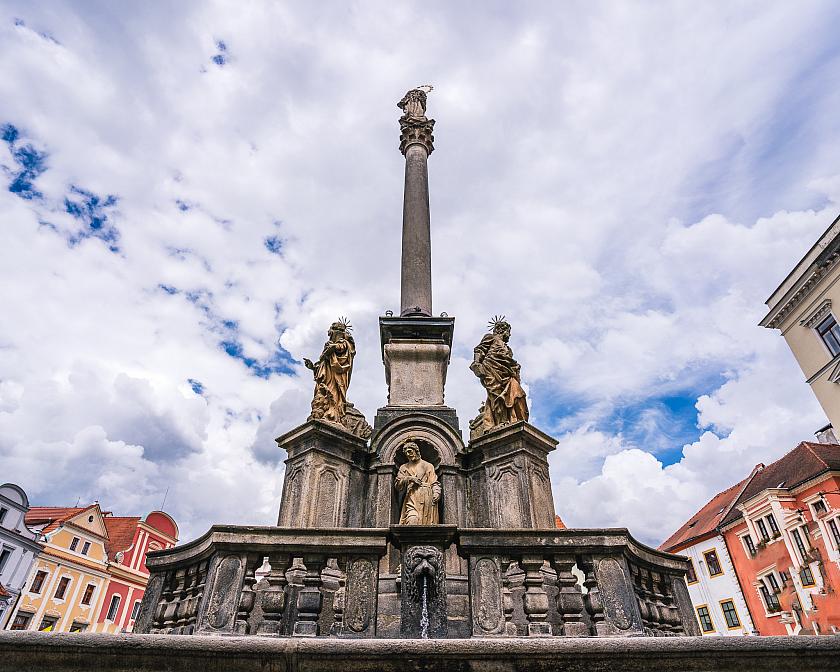The hexagonal stone fountain in its present form dates back to 1844 and was built around a Marian plague column built in 1714 – 1716.
History
The first mention of the water run on the square in Český Krumlov appeared in fire rescue and police regulations compiled by Johann von Rosenberg in April 1388. A record from 1443 says that since the water tank was made of wood.
The first public fountain made of stone appeared in the 16th century. It happened at the end of the 1570's when a new reservoir replaced the old one. Water was led out from a municipal pond at Upper Gate and then went through piping located on Upper (Horní) street. Besides the fountain, there were so-called halters standing on the square from the 16th century which were actually tanks with running water retaining live fish. The halters were here until the end of the 17th century.
The 16th century fountain stood there until 1844. It looked much simpler than today. Its ground was multiangled (probably octagonal). A simple stony little column with water running out through four pipes stand in its center. The column was decorated by a pyramid on top.
In 1843, the poor condition of the fountain caused it to be discontinued, and a new one was planned to be built at the Plague Column on the upper side of the square.
A stone six-angled fountain surrounds a Plague Column erected during 1714-1716 for the memory of the plague epidemic that struck the town during 1680-1682. Sculptural decoration shows mainly sculptures of anti-plague patrons (saints) and town protectors. Sculptures of St. Václav, St. Vitus, St. John the Evangelist, St. Juda Thaddeus in the upper row, and St. Francis Xavier, St. Sebastian, St. Kajetan and St. Rocchus in the lower row are the masterpieces of a Prague sculptor Matěj Václav Jäckel, as well as a sculpture of Virgin Mary situated on top of the column.


